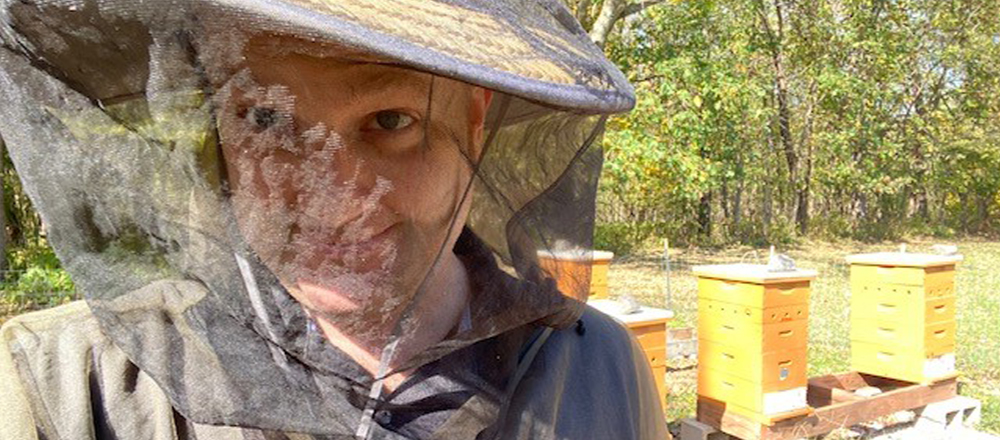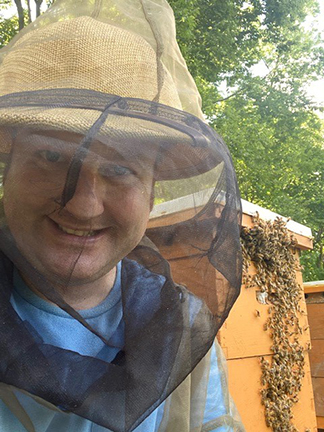
While most of us run from bees, not so for Michael Brown, DO, a family medicine physician with Meritas Health Smithville. With 12 hives and over 60,000 bees per hive, Dr. Brown embraces beekeeping for its positive impact on our ecosystem.
Bees and Food Production
Magic of Bees
Did you know that bees…
- Store honey in a hexagon shape, which is structurally stronger than a square or a circle
- Communicate to other bees where to find a flower, even if that flower is a mile away; the bee can find its way back
- Use the sun for direction
Whether through wind, water or wildlife, pollinators pollinate nearly three-quarters of the plants that produce 90% of the world’s food. Pollination is the transfer of pollen from the male part (stamen) of a plant to a female part (pistil). This process enables fertilization, which results in the production of seeds and eventually plants.
For honeybees, that food comes from plant nectar they bring to hives, where they pass it from mouth to mouth and bee to bee. Once the moisture content is reduced from about 70% to 20%, it takes the form of honey.
Reward of the Harvest
For Dr. Brown, his more immediate reward is reaping the benefits of harvesting up to 200 pounds of raw honey each year. He shares his bounty with friends, family and local residents. “Honey is naturally clean and a natural antiseptic,” Dr. Brown said.
Dr. Brown uses an extractor, which spins the honey and filters large particles. It takes one to two days for the yearly harvest in July or August. He explained that the honeybees he raises in his hives produce 10 times more honey than they need to survive the winter, so he harvests the excess.
The Brown family likes using the honey instead of sugar to make breads and ice cream, but Dr. Brown is quick to advise, “Don’t just raise bees for the honey. It’s a tough hobby and if you want honey, buy honey. It’s cheaper,” he laughed.
Family Activity
 Beekeeping is a family activity. Dr. Brown’s 13-year-old son Matthew helps build boxes for collecting bees to build new hives in April or May during swarm season, when the bees are trying to find new homes. “They are not aggressive during this time because they aren’t protecting anything,” Dr. Brown said. “This is why you see photos with bees on someone’s face and the person isn’t stung.”
Beekeeping is a family activity. Dr. Brown’s 13-year-old son Matthew helps build boxes for collecting bees to build new hives in April or May during swarm season, when the bees are trying to find new homes. “They are not aggressive during this time because they aren’t protecting anything,” Dr. Brown said. “This is why you see photos with bees on someone’s face and the person isn’t stung.”
During the other times of the year, beekeepers use smoke to control the bees when it’s time to collect honey or do other tasks. The smoke is a distraction and masks the pheromones bees release when agitated.
Learning Through Experience
Even for the most experienced honey farmers, Mother Nature can provide challenges. One year a flood wiped out all of Dr. Brown’s bees. “Since that year, the bees have never done better,” laughed Dr. Brown. “That experienced forced me to learn better techniques, which has led to healthier bees.” For instance, Dr. Brown learned how to locate and manipulate genetics to breed queens and increase the bee population.
Dr. Brown shares his knowledge by teaching classes and mentoring new beekeepers. His goal is to help the environment by increasing the number and health of the bees.



